
-
 Auger-Aliassime beats Shelton to get off mark at ATP Finals
Auger-Aliassime beats Shelton to get off mark at ATP Finals
-
Argentina's Milei to follow Trump in skipping S.Africa G20: spokesperson

-
 Back on track: Belgian-Dutch firm rescues Berlin to Paris sleeper train
Back on track: Belgian-Dutch firm rescues Berlin to Paris sleeper train
-
Los Angeles 2028 Olympic Games schedule revealed

-
 Wolves appoint Edwards as manager in bid to avoid relegation
Wolves appoint Edwards as manager in bid to avoid relegation
-
UK music industry warns growth threatened by AI, Brexit

-
 Epstein alleged Trump 'knew about the girls': Democrats
Epstein alleged Trump 'knew about the girls': Democrats
-
German experts slam spending plans, cut GDP forecast

-
 S.Africa's Ramaphosa says US skipping G20 'their loss'
S.Africa's Ramaphosa says US skipping G20 'their loss'
-
Algeria pardons writer Boualem Sansal

-
 Tuchel warns Bellingham must fight for England berth at World Cup
Tuchel warns Bellingham must fight for England berth at World Cup
-
Mbappe says France football team 'to remember' Paris terror victims

-
 Joshua decision on 2025 bout imminent - promoter
Joshua decision on 2025 bout imminent - promoter
-
Cambodia says Thai troops kill one in fresh border clashes

-
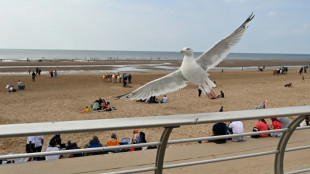 UK holidaymakers told to shout, not get in a flap over seagulls
UK holidaymakers told to shout, not get in a flap over seagulls
-
Pope Leo reels off four favourite films

-
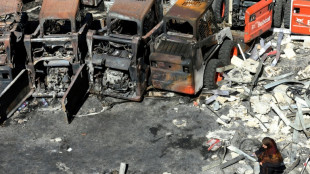 Lebanese say Israel preventing post-war reconstruction
Lebanese say Israel preventing post-war reconstruction
-
Stocks mostly rise on hopes of US shutdown deal, rate cut

-
 Bayer beats forecasts but weedkiller woes still weigh
Bayer beats forecasts but weedkiller woes still weigh
-
42 feared dead in migrant shipwreck off Libya: UN
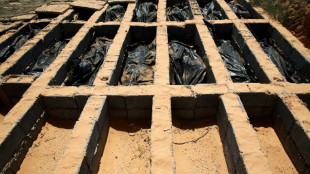
-
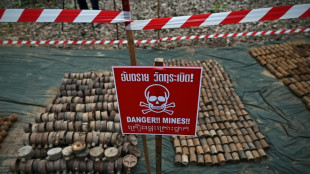 Cambodia, Thailand trade accusations of fresh border clashes
Cambodia, Thailand trade accusations of fresh border clashes
-
Pakistan tightens Islamabad security after suicide blast

-
 Messi return 'unrealistic', says Barca president Laporta
Messi return 'unrealistic', says Barca president Laporta
-
Bayer narrows loss, upbeat on weedkiller legal woes
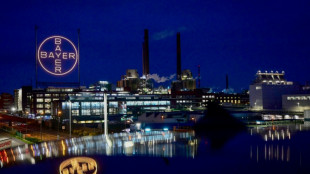
-
 Corruption scandal, court battles pose test for Zelensky
Corruption scandal, court battles pose test for Zelensky
-
DR Congo ex-rebel leader Lumbala's war crimes trial opens in France

-
 Five things to know about the first G20 held in Africa
Five things to know about the first G20 held in Africa
-
Asian markets rise on hopes over shutdown deal, rate cut

-
 Johannesburg gets rushed makeover for G20 chiefs
Johannesburg gets rushed makeover for G20 chiefs
-
World wine output set for modest 2025 recovery: industry body

-
 Ukraine justice minister suspended over corruption case: PM
Ukraine justice minister suspended over corruption case: PM
-
Osimhen, Mbeumo potential key figures in African World Cup play-offs

-
 Tanzania politicians in shock as cabal takes over after massacre
Tanzania politicians in shock as cabal takes over after massacre
-
Prague cathedral's long-awaited organ to pipe up in 2026

-
 Australia's Hazlewood gets all-clear after Ashes scare but Abbott ruled out
Australia's Hazlewood gets all-clear after Ashes scare but Abbott ruled out
-
Migrant workers in Romania fear wave of hate fuelled by far right

-
 DR Congo ex-rebel leader Lumbala's war crimes trial opens in Paris
DR Congo ex-rebel leader Lumbala's war crimes trial opens in Paris
-
Turkey says military plane crash in Georgia killed all 20 onboard
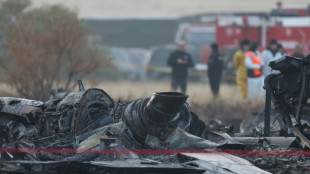
-
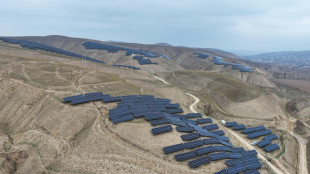 Renewables outpace fossil fuels despite US policy shift: IEA
Renewables outpace fossil fuels despite US policy shift: IEA
-
India bank on formidable home Test record in South Africa series

-
 Australia's Hazlewood in injury scare ahead of first Ashes Test
Australia's Hazlewood in injury scare ahead of first Ashes Test
-
No ordinary Joe: Stokes backs Root to fire in Australia

-
 Humans can no longer tell AI music from the real thing: survey
Humans can no longer tell AI music from the real thing: survey
-
House vote likely Wednesday on ending US government shutdown

-
 Sixers edge Celtics while Thunder reach NBA-best 11-1
Sixers edge Celtics while Thunder reach NBA-best 11-1
-
Cambodia's Prince Group denies link to scams after asset seizures

-
 Stokes bats away criticism of England's Ashes preparations
Stokes bats away criticism of England's Ashes preparations
-
Russia loses legal bid to build embassy next to Australian parliament
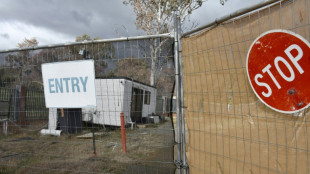
-
 Ethiopia's invasive prosopis tree chokes livelihoods and land
Ethiopia's invasive prosopis tree chokes livelihoods and land
-
'We're already living in science fiction': The neurotech revolution


Greenland melted recently, says study that raises future sea level threat
A mile-thick ice sheet in Greenland vanished around 416,000 years ago during a period of moderate natural warming, driving global sea rise to levels that would spell catastrophe for coastal regions today, a study said Thursday.
The results overturn a long-held view that the world's largest island was an impregnable fortress of ice over the past 2.5 million years, and instead show it will be far more vulnerable to human-caused climate change than previously thought.
"If we want to understand the future, we need to understand the past," University of Vermont scientist Paul Bierman, who co-led the paper published in Science, told AFP.
The research relied on an ice core extracted 4,560 feet (1,390 meters) under the surface of Northwest Greenland by scientists at Camp Century, a secretive US military base that operated in the 1960s.
This 12-foot long tube of soil and rock was lost in a freezer only to be rediscovered in 2017.
Scientists were stunned to learn it contained not just sediment but leaves and moss -- irrefutable evidence of an ice-free landscape, perhaps covered by an ancient forest that woolly mammoths would have roamed.
- A green Greenland -
Though researchers were deprived for decades of access to the precious sample, Bierman said in some ways it was "providential," as the cutting-edge techniques used to date the core are very recent.
Key among these is "luminescence dating," which allowed scientists to determine the last time that sediment buried beneath the Earth's surface was exposed to light.
"As sediment is buried beneath the surface, background radiation from soil fills in the little holes or imperfections in minerals like quartz or feldspar, and builds up what we call a luminescence signal over time," co-author Drew Christ told AFP.
In a dark room, scientists took interior strips of the ice core and exposed them to blue-green or infrared light, releasing trapped electrons that form a kind of ancient clock that shows the last time they were exposed to sunlight, which erases the luminescence signal.
"And the only way to do that at Camp Century is to remove a mile of ice," said Tammy Rittenour, a co-author of the study at Utah State University. "Plus, to have plants, you have to have light."
Luminescence dating provided the end point of the ice-free period, with the start point coming from another technique.
Inside the quartz from the Camp Century core, rare forms -- called isotopes -- of the elements beryllium and aluminum build up when the ground is exposed to the sky and cosmic rays.
Looking at the ratio of the normal forms of these elements to the rare isotopes, the scientists could derive a window for how long the rocks were at the surface versus how long they were buried.
They found the sediment was exposed for less than 14,000 years, meaning this was how long the area was ice-free.
- Coastal cities imperiled -
The Camp Century core was taken only 800 miles from the North Pole, with the study showing the entire region would have been covered in vegetation.
This took place in a time of natural warming called an interglacial period, when temperatures were similar to today, around 1.8-2.7 degrees Fahrenheit (1-1.5C) warmer than the pre-industrial era.
The team's modeling showed that the ice sheet melting would have caused between five and twenty feet of sea level rise at that time.
This suggests that every coastal region of the world, home to many global population centers, are at risk of submersion in the coming centuries.
Joseph MacGregor, a climate scientist at NASA who was not involved in the study, noted that the interglacial period that warmed Greenland during this period lasted tens of thousands of years, much longer than what humans have induced so far.
But even so, "we've far surpassed the magnitude of the greenhouse gas forcing back then," he said.
Atmospheric levels of heat-trapping carbon dioxide are currently 420 parts per million (ppm) against 280 ppm during Greenland's ice-free period, and this will remain in the skies for thousands of years.
"We're doing a giant experiment on Earth's atmosphere, and we don't know the results of that experiment," said Bierman. "I don't take that as 'Oh my god the sky is falling,' I take that as we've got to get it together."
O.Karlsson--AMWN



